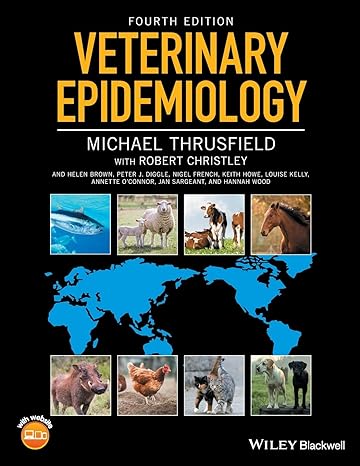|
|
|
| |
 |
|
|

|
 推薦指數:
推薦指數:





|
|
- 內容介紹
|
Veterinary Epidemiology 4th Edition
by Michael Thrusfield (Author), Robert Christley
Publisher : Wiley-Blackwell; 4th edition
Language : English
Paperback : 896 pages
ISBN-10 : 9781118280287
ISBN-13 : 978-1118280287
Item Weight : 2.31 pounds
2018
A comprehensive introduction to the role of epidemiology in veterinary medicine
This fully revised and expanded edition of Veterinary Epidemiology introduces readers to the field of veterinary epidemiology. The new edition also adds new chapters on the design of observational studies, validity in epidemiological studies, systematic reviews, and statistical modelling, to deliver more advanced material.
This updated edition begins by offering an historical perspective on the development of veterinary medicine. It then addresses the full scope of epidemiology, with chapters covering causality, disease occurrence, determinants, disease patterns, disease ecology, and much more.
Veterinary Epidemiology, Fourth Edition:
● Features updates of all chapters to provide a current resource on the subject of veterinary epidemiology
● Presents new chapters essential to the continued advancement of the field
● Includes examples from companion animal, livestock, and avian medicine, as well as aquatic animal diseases
● Focuses on the principles and concepts of epidemiology, surveillance, and diagnostic-test validation and performance
● Includes access to a companion website providing multiple choice questions
Veterinary Epidemiology is an invaluable reference for veterinary general practitioners, government veterinarians, agricultural economists, and members of other disciplines interested in animal disease. It is also essential reading for epidemiology students at both the undergraduate and postgraduate levels.
|
|
|

